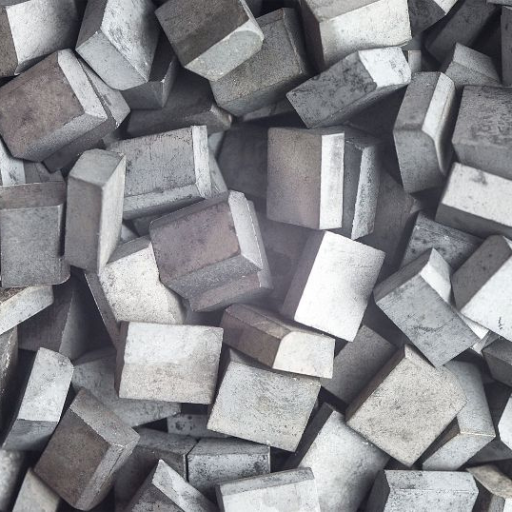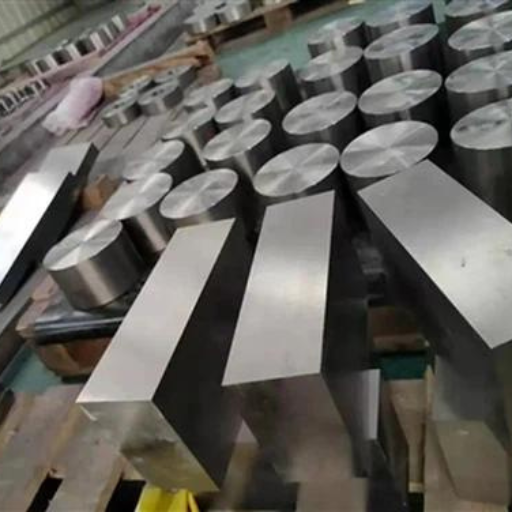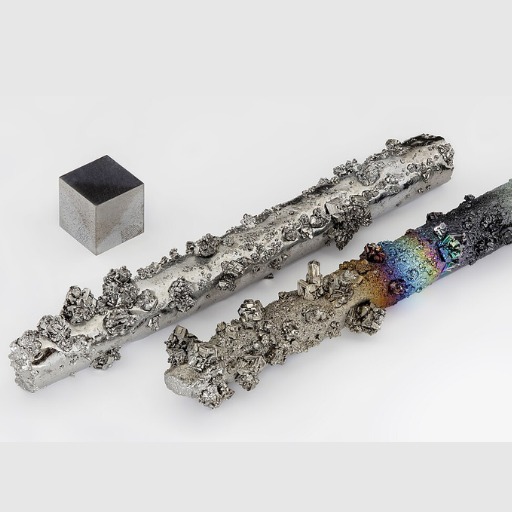Metals have always intrigued humanity with their resilience and versatility. From ancient armour to modern skyscrapers, these elements play a crucial role in shaping our world. This blog aims to delve into the ten strongest metals known to exist, comparing their unique properties and examining their various applications. Whether you’re a science enthusiast, a materials engineer, or simply curious about the hidden strength within the Earth’s crust, this article will provide an insightful journey through the remarkable world of metals. Join us as we explore the pinnacles of strength and durability, unmasking the true titans of the metallic realm.
What Are the Characteristics of the Strongest Metal in the World?
Understanding Tensile Strength: Measuring Resistance of Metals
Tensile strength is an important measure for determining how hard a substance can fight to resist being pulled apart. It is quantified as the maximum amount of tensile stress that a material can withstand while being stretched before rupture occurs. Typically, it is expressed in megapascals (MPa) or pounds per square inch (psi). High tensile strength implies that a material can handle significant stress and still remain intact thereby making this property crucial in applications which seek durability and reliability. This test consists of applying controlled force to sample until failure, which gives valuable information about the metal’s behavior under tension. Major factors affecting tensile strength include the metal’s composition, treatment process and crystal structure.
The Role of Yield Strength in Determining the Strongest Metal
Yield strength plays a significant role in identification of the strongest metal because it measures at what point starting materials get plastic deformation. As opposed to tensile strength which checks on final point of rupture, yield strength anchors around initiation stage whereby permanent distortion becomes noticeable. It shows that metals with high yield strengths can withstand considerable pressures without being permanently deformed. This property assumes a lot of importance when certain parts are expected to retain their shapes despite being subjected to various forms of stresses such as those experienced in construction works and manufacturing industries. Yield strength depends on alloy content, heat treatment, grain size etc., and is usually measured in mega pascals (MPa). For instance tungsten titanium and some strong steel alloys have highest values for this attribute among metals used predominantly where mechanical performance and longevity are major concerns.
Comparing Metals: Strength vs Hardness
In evaluating metal properties one must differentiate between hardness and strength since they portray different aspects when it comes to the materials performance. Strength encapsulating both tensile as well as yield strengths refers to ability by metals to take applied forces without breaking or deforming at all. On the opposite, hardness measures how resistant a metal is to deformation, specifically permanent indentation or scratching.
Metals with high strength can withstand considerable amounts of stress and hence they are important in structural applications where there is need for load carrying capacity. Some examples of such metals include tungsten and some high strength steels. In contrast, when wear resistance and abrasion resistance are highly required like cutting tools or wear plates, hardness becomes vital. Chromium and titanium are known for their hard surfaces that can withstand much abrading.
While the strength of a metal indicates its overall toughness under loads, its hardness determines how well it can resist surface level damage. Engineers choose metals that have these two properties balanced according to specific requirements in an application so that optimum performance and longevity are achieved by employing alloys with the best possible combination of both attributes.
Why is Tungsten Known as the Strongest Metal on Earth?
Exploring Tungsten’s High Melting Point and Hardness
Tungsten is famous for being the hardest metal on earth because of its unique physical properties, notably high melting point and hardness. It has a melting point of 3,422 degrees Celsius (6,192 degrees Fahrenheit), which is higher than all other metals; therefore it becomes necessary in applications that need resistance to very high temperatures such as aerospace or military technology. The reason why this element has such an outstandingly high melting point lies in strong atomic bonds and robust lattice structure of tungsten which requires huge amounts of energy to break them apart.
Apart from its high melting point, tungsten also possesses considerable hardness. On the Mohs scale of mineral hardness, it rates about 7.5 making it much more resistant to scratching than many other metals. This hardiness comes from dense packing atoms within the metal as well as strong bonding forces between them which enable tungsten withstand great wear and tear forces applied against it thus making such properties ideal for use in cutting tools, mining machinery etc., where durability is paramount.
With unprecedented heat resistance coupled with unusual hardness levels; Tungsten becomes an unbeatable choice material for tough industrial applications thereby earning itself a place amongst the strongest metals known to man.
Tungsten’s Applications in Various Industries
The aerospace industry owes a lot to tungsten due to its high melting point and extraordinary hardness. Rocket engine nozzles along with other components required for space flight must be able to survive extreme temperatures as well mechanical stress conditions – something that only this metal can offer. For instance, during re-entry into earth’s atmosphere rocket engines have been known reach temperatures above 3,000 degrees Celsius (5,432 degrees Fahrenheit) hence any material used should remain intact throughout entire process failure which may result in catastrophic consequences.
In addition to exceptional heat resistance capabilities combined with unmatched toughness; Tungsten finds wide application in military technology because of these same features namely wear ability under duress plus tolerance towards corrosion arising out exposure combat environments where there is constant contact between different types alloys used. Further still they are effective against hard targets due their high density (19.3 grams per cubic centimeter) which ensures that projectiles made from them can easily pierce through even the toughest armoured plates without losing structural integrity.
Medical science also benefits greatly from tungsten owing mainly radiopacity properties attributed to it; this makes very useful when it comes imaging diagnostic devices such as x-rays as well ct scans where ability block off these kinds rays required. Furthermore strength coupled with resistance radiation damage plays significant role in radiotherapy machines which use beams high energy γ – rays destroy cancerous cells but spare healthy surrounding tissue thus saving lives.
The electronics industry takes advantage of tungsten’s unique electrical characteristics combined together heat resistance capabilities too thereby making possible various electronic devices necessary for day today activities; for instance incandescent light bulbs employ filaments composed entirely out of tungsten due its relatively higher melting point compared other metals used lamps, secondly excellent conductivity coupled minimum thermal expansion renders ideal material semiconductor elements vacuum tubes among others.
Durability being one key aspect industrial manufacturing especially cutting tools and machinery; Tungsten has been found be best suited meeting these requirements because apart from being hardest metal known today besides diamond mohs scale hardness close proximity meaning that any object made using this element will last longer than those made from any other known materials hence reducing frequency replacement costs associated thereof.
Limitations of Tungsten Despite Its Strength
Tungsten does have its downfalls, though these are not many given its many beneficial properties. One of the most notable limitations is that it is brittle when at room temperature thus can be fractured or broken by mechanical shocks or even slight impacts. It means that this material cannot be used where flexibility and toughness are needed. In addition to being hard work since it has a very high melting point therefore requires specialized machines for manufacturing and processing which may take long periods also cost much money on their own too. Also, tungsten tends to oxidize at higher temperatures hence needs protection against corrosion in high-temperature areas otherwise they will deteriorate quickly because of exposure to oxygen molecules over time. While the cost savings from using tungsten typically cover for the expense involved in buying such metals, there is still a disadvantage with this as well; namely that its relative price level could restrict wider adoption based on affordability considerations alone for applications where costs are more sensitive.
How Does Titanium Compare to Other Strong Metals?
A Deep Dive Into the Tensility of Titanium
Titanium is known for its tensile strength; that is, it can be stretched with a lot of pressure. The alloy composition and type of treatment can give tensile strengths ranging from 30,000 psi (210 MPa) to 200,000 psi (1380 MPa). It is one of the strongest metals if we consider strength-to-weight ratio. In fact, titanium has got steel’s excellent strength but with reduced weight. Titanium has high tensile strength as well as resistance to corrosion and high-temperature stability which make it perfect for aerospace applications as well as military, medical implants and high-performance car parts. In addition, titanium keeps its strength at very high temperatures thus making it useful in extreme environments where other metals may not work.
Advantages of using Titanium Alloy in Aerospace Industry
The titanium alloy has several advantages especially because it possesses exceptional strength-to-weight ratio in comparison to other materials used in the aerospace industry. Consequently, such characteristic enables stronger yet lighter aircrafts leading to enhanced performance and fuel consumption too. Moreover, corrosion resistance also works as an added advantage since it prolongs the life cycle of aerospace components exposed to harsh environmental conditions. Additionally, it retains its mechanical characteristics even when subjected to relatively higher temperatures thus suitable for jet engines among others that require such properties under thermal stress situations. Safety is also improved when titanium is used because the material is tough enough not to break easily. Thus, employing titanium alloys in aeronautical engineering leads to more productive planes that have long lifespans.
Why Most People Prefer Titanium Over Stainless Steel
Titanium surpasses stainless steel in various aspects although this metal has been recognized for its strength and resistance towards corrosion compared to any other material available on earth till date Firstly,the weight ratio between stainless steel just cannot be compared with that of titanium which means lighter elements are preferred by engineers wherever less weightiness matter like in aeronautical industry and production of sports. Second, titanium maintains this property over stainless steel in more hostile environments including seawater and acidic conditions. Besides, it is able to retain its mechanical characteristics even at higher temperatures making it suitable for high stress applications such as jet engines. All these together with the fact that titanium is biocompatible make it more appropriate than SS for use as medical implants or other special purposes.
Osmium: One of the Densest Naturally Occurring Metals
On the scale of metals that exist in nature, osmium is among the densest with a density approximately 22.59 g/cm3, which makes it heavier than other heavy metals such as iridium. It belongs to the platinum group and is characterized by brittleness and bluish silver colour. Osmium occurs in deposits containing platinum ores; however, its extraction from there is difficult enough.
The element is noteworthy for its high hardness and melting point, which make it resistant to abrasion and corruption. This has led to osmium being used in some specialty applications including electrical contacts, nibs for fountain pens and very strong alloys.
Owing to its uniqueness, this metal finds application in various electrical devices, ink pens as well as hard-wearing alloys. However, it does not enjoy widespread use due to its rare occurrence and complicated method of refining.
Chromium: The Hardest Metal and Its Industrial Uses
Chromium is considered one of the hardest metals known because it has several physical properties relevant for industrial applications like resistance to corrosion at elevated temperature or oxidation. Durability wise on Mohs scale is 8.5 making chromium outperform many other metals.
Stainless steel production primarily uses chromium which increases its resistance against rusting and tarnishing among other things. In addition, chrome plating utilizes this metal extensively where different kinds of plastics or metallic parts receive a glossy protective surface layer via electroplating.
Chemically speaking this element is considered vital during making of high strength super alloy which are used in aircraft engines as well as gas turbines.
Afterwards, chromium compounds are utilized mostly as pigments but also as preservatives for wood material or even tanning agents in leather industry thus emphasizing its wide array of uses across industries.
Exploring the Strength and Versatility of Stainless Steel
It consists primarily of iron along with carbon while the addition of chromium content to at least 10.5% is also essential.
In terms of strength, stainless steel has excellent mechanical properties like tensile strength which varies between 500 MPa and 1200 MPa depending on its grade of steel and type of heat treatment employed. Stainless steel can be tailored for various applications due to this wide range of tensile strength, from architectural structures to medical instruments.
Stainless steel also offers excellent versatility:
- Industrial Applications: The chemical, oil, and gas industries frequently employ stainless steel in the production of equipment due to its resistance to high temperature or corrosion.
- Consumer Goods: Household goods such as kitchen appliances are made from stainless steel because it is easy to clean and requires less maintenance.
- Construction: Steel’s extraordinary strength enables it in constructing bridges, buildings and even monuments.
- Medical Uses: Some alloys based on it are used for making surgical instruments because steel does not react chemically with living tissues.
These features show how diverse the uses of stainless steel could be thereby making it an irreplaceable material in many different industries.
How Do Different Types of Strength Impact Metal Ranking?
The Significance of Metal Applications’ Toughness
Metal applications highly depend on impact strength, which shows the material’s capability to resist fractures following a rapid flow. This quality is vital for applications involving metals that are exposed to dynamic or sudden loading conditions like automobiles, aerospace, industrial machinery, according to my findings. High impact strength guarantees efficient energy absorption and dissipation in metals hence minimizing chances of catastrophic failures. It is an important feature for components used in harsh conditions as it helps in enhancing their safety, reliability and durability. For example, alloys with high impact strength are frequently chosen for critical parts such as airplane landing gear or car bumpers since they need to be highly resistant against impact.
Compressive Strength: Why It Matters for Structural Metals
In terms of structural metals, compressive strength really counts because it determines how much load a material can bear before it permanently deforms or collapses under pressure. From what I can tell, compressive strength is very important when dealing with columns, supports and load bearing walls where the metal must not buckle under heavy loads. These structures should have high compressive strengths so that they can adequately support loads at the right angles that are required for both safety and life span purposes in construction projects. A characteristic which makes it possible for constructors of buildings as well as bridges who do not want them collapsing after few years even if subjected to great stresses
Frequently Asked Questions (FAQs)
Q: What are the 10 strongest metals in the world according to the article?
A: The 10 strongest metals are Tungsten, Titanium, Chromium, Steel (as an alloy of iron and carbon), Inconel, Magnesium Alloys, Silicon Carbide, Vanadium, Nickel and Tantalum.
Q: Is tungsten the strongest metal in the universe?
A: It is arguable that tungsten is the toughest of all metals in the universe because of its exceptional properties.
Q: Why is tungsten one of the strongest metals?
A: It has been recognized as one of the toughest metals in history because it has a high tensile strength and melting point than any other pure metal thus making it very tough and resistant to heat and pressure.
Q: How does titanium rank among the world’s toughest metals?
A: Pure titanium is famed for having high strength-to-weight ratio, corrosion resistance and also its high tensile strength which makes it among world’s strongest metals known so far.
Q: Can you give me some insight into what makes chromium strong?
A: Hardness as well as corrosion resistance are how chromium gets involved with its strength. It happens to be among the hardest kinds of metals and often used to improve toughness or even resistance to corossion when blended with other alloys.
Q: What is steel like compared to other strong metals?
A: They consider steel alloyed with carbon as one of the strongest materials ever because it can withstand breakage under pulling force even at elevated temperatures.
Q: Why would nickel be one of ten most hardiest materials in existence?
A: High tensile strength; toughness; excellent environmental corrosion resistance/oxidation make this material widely used in many demanding applications.










